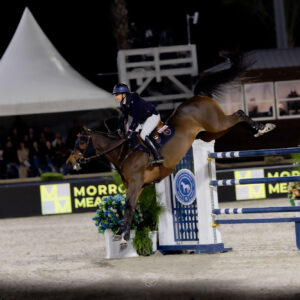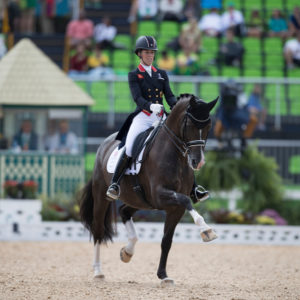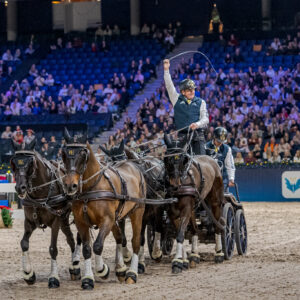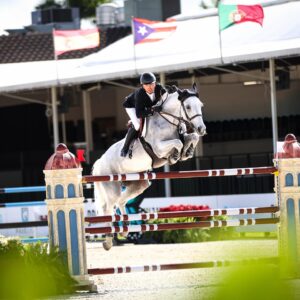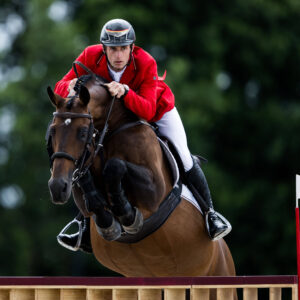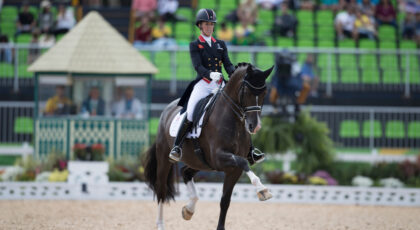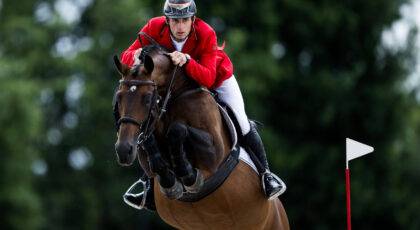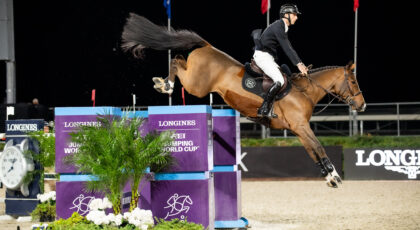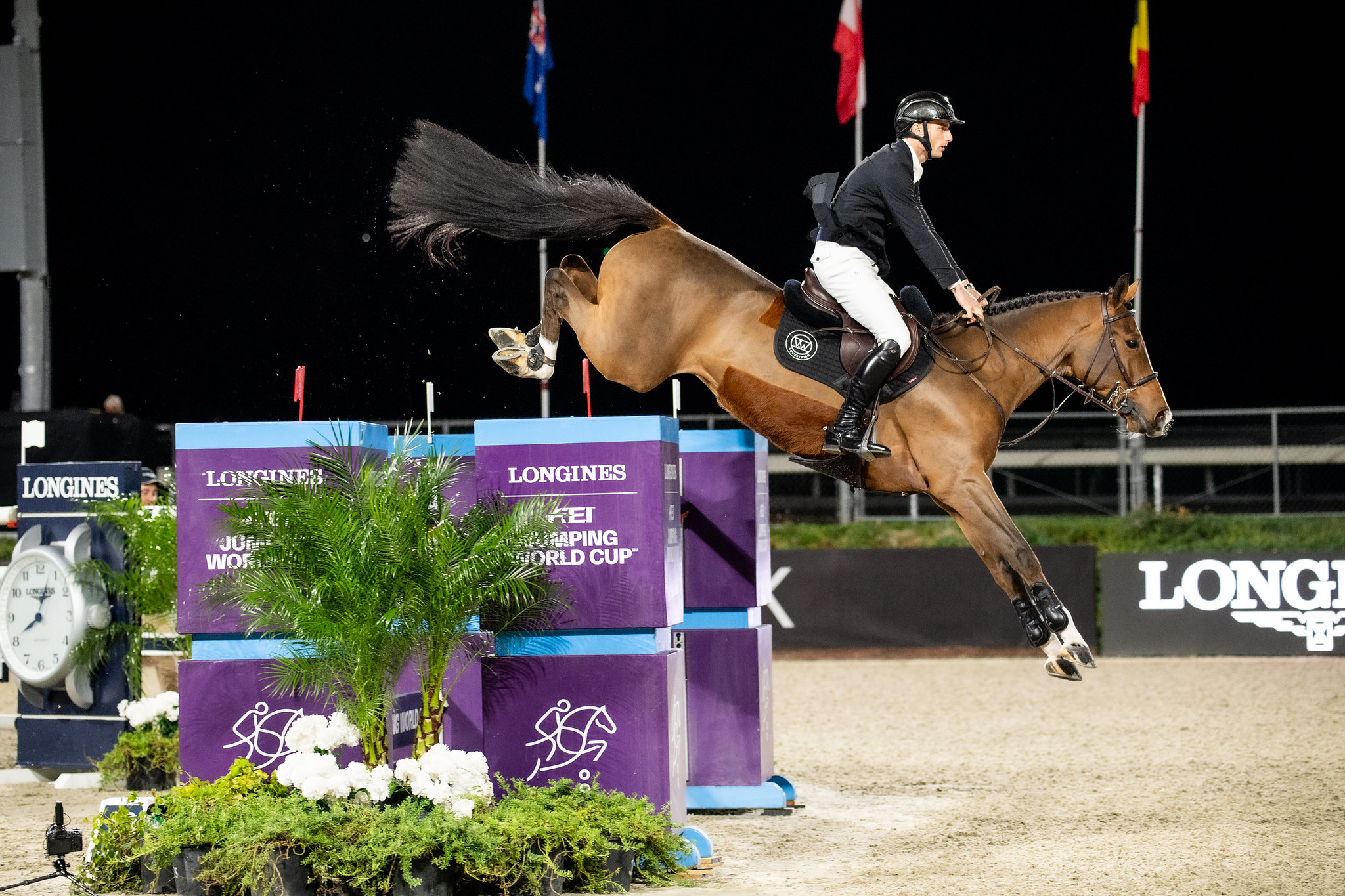Gymnastic exercises are used extensively at Millar Brooke Farm to prepare horses for the competition ring—from young prospects up to Olympic caliber horses. In this article, Jonathon Millar shares some theory behind gymnastics and provides practical tips on how you can incorporate these exercises into your training program.
The home base of Ian Millar, Amy Millar, Jonathon Millar and Kelly Soleau-Millar, as well as a number of top junior and amateur riders, Millar Brooke Farm is one of the most successful programs in show jumping history.
Millar Brooke Farm (with locations in both Canada and USA) has been represented at every Olympics since 1972, has coached over 30 Grand Prix riders, and has had over 150 horses compete at the Grand Prix level. Strategic use of gymnastics has been a common denominator in each.
“The Merriam-Webster Dictionary defines gymnastics as physical exercises designed to develop strength and coordination,” says longtime Canadian Equestrian Team member Jonathon Millar. “In show jumping, strength, balance, agility, and coordination are all skills required by our horses. Thus, we use gymnastic exercises to target and develop these abilities.”
On days when the Millars jump school at home, gymnastics play a central role in training.
The ride begins with a general warm-up designed to warm the horse’s body up and prepare it for the exercise to come. Through flatwork at the walk, trot, and canter, a focus is placed on increasing the horse’s core body temperature, ensuring good movement quality, and stretching the muscles.
Additionally, at this time it is important to make sure the horse is rideable, focused, and willing to learn the day’s lesson(s).
“It is no secret that a good warm-up precedes a good workout or competition,” says Jonathon. “If you and/or your horse have weaknesses on the flat, they tend to become exaggerated as the movement complexity increases—i.e. with more pace and jumping. So the warm-up is the perfect opportunity to check all the boxes to make sure you and your horse have the skills needed to begin jumping.”
At Millar Brooke, a trot gymnastic typically starts with three raised trot rails (height of 7 inches) spaced four feet (4′) apart. The trot poles are important for teaching the horses patience, coordination and footwork.
Additionally, the Millars have found that raised trot poles are more effective for developing strength in their horses. With a pole flat on the ground, the horse only needs to lift its hooves a few inches, whereas raised trot poles force a horse to significantly engage its core and to move the legs through a larger range of motion. When done properly, they ensure a horse is well balanced—it is hard for a horse to effectively work over raised trot poles if they have poor posture at the trot.
“As a rider working through raised trot poles, you want your input to be minimal,” says Jonathon. “The purpose is for the horse to figure out how to move its’ body efficiently and accurately to place the hooves between the poles while holding its own rhythm and balance. If you micromanage a horse through the poles, or gymnastics in general, the learning effect for your horse will not be as strong.”
After working over the trot poles a few times, a small vertical (typically 2’6″ in height) is added nine feet (9′) after the last trot pole. The horse must trot through the raised poles and then place the front legs, and subsequently hind end, in preparation to jump the vertical. If done correctly, you now have a very consistent and welcoming start to your gymnastic.
“One of the hardest things about executing a gymnastic is getting the horse to jump while holding its own balance and rhythm,” says Jonathon.
“There are four variables for getting a horse to the jump correctly. The most important is pace, followed by being on the correct line and having the horse balanced. The last variable is the distance—if you execute the first three correctly the distance usually takes care of itself. Using the trot poles and a small vertical to start the exercise allows us to precisely place the horse where we need them. The poles set-up the rhythm and balance the horse.”
Following the vertical, you can now build whatever you need to in order to work on specific skills for your horse. In the video below, Jonathon and his Grand Prix partner Daveau are working through a gymnastic.
Gymnastic Build:
- Three raised trot poles set 4 feet apart
- A vertical set 9 feet after the last trot pole
- A vertical set 28 feet after jump 1
- An oxer set 20 feet after jump 2
Another purpose of this gymnastic is to work on straightness. Here, it is important that Daveau is pushing evenly on both left and right sides of his body to ensure he progresses through the exercise in a straight line. Any strength imbalances or asymmetries would show up as a drift, which is why it is important to focus on jumping a balanced and straight line.
In the video, you can see flexible pieces of blue plastic placed on the ground to help guide the horse through the gymnastic. The flexible plastic is used for safety—if a horse steps on the material it will compress as opposed to a normal pole that can cause an injury if a horse steps on it.
“As a horse trainer and rider, your goal is always to look for exercises that will mentally engage your horse and teach them a new skill,” says Jonathon.
“Since we cannot speak to a horse, we need to be creative and use exercises that communicate an idea through the horse’s perception of it. With gymnastics, we aim to show the horse that if they move their body a certain way between the jumps, then they are rewarded with an easy and effective jumping effort. Through this, the horse learns and increases its coordination, flexibility, balance, strength, and agility.”
Through years of practice and evaluation, the Millars have developed gymnastics that can accomplish a wide range of learning objectives with their horses. When used correctly, gymnastics are some of the most valuable assets in a trainer’s toolbox and can be extremely effective in preparing horses of all levels for the competition ring.
Dr. Tim Worden has worked as a sport scientist with numerous FEI-level show jumping riders. He has a PhD in biomechanics and specializes in applying human high-performance training techniques to horses.


 March 25, 2020
March 25, 2020 








